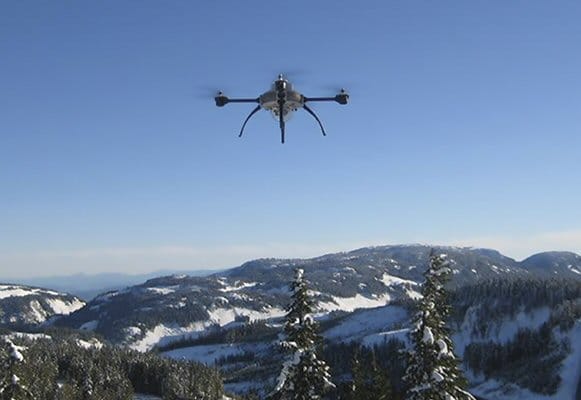From environmental monitoring to geospatial mapping and crop spraying to aerial photography, the range of potential uses for unmanned aerial vehicles (UAV), also known as remotely piloted aircraft systems and Unmanned Aerial systems (UAS), is vast and growing.
Demand for these aircraft systems is increasing at a rapid rate as governments, businesses and the public sector continue to find more innovative ways to use these low-cost craft.
In the UK, remotely piloted systems are not currently permitted to fly in shared space with conventional aircraft. Instead, they can fly at a maximum height of 400 feet and must remain within the line of sight of the operator.
Despite this, with so many possible uses for UAV’s in a wide variety of different sectors, it is clear that this industry is only going to get bigger. It came as no surprise last month (September) when the National Aeronautical Centre (NAC) at West Wales Airport in Aberporth – the only privately-owned airport in Europe that allow UAS to fly in certain segregated zones – announced that it was planning to significantly expand its capabilities by testing the systems at Newquay Cornwall Airport.
Ray Mann, the head of the NAC, said he believed there was an opportunity for the UK to lead the world in developing the systems, adding: “We need to ensure that some current perceptions of civilian uses of UAV don’t hinder the UK’s ability to capitalise on this exciting opportunity for economic growth.”
When regulation is lifted in the future, it is inevitable that UAV’s will be sharing airspace with conventional aircraft, which will take this industry into an entirely new level of risk.
If you crash your UAV today in a designated area, the worst that is likely to happen is that it collides with a tree or some other obstacle and damages your craft. If, as seems certain in the future, UAV’s will be sharing air space with other craft, the potential to cause serious damage and even death is much greater.
For this reason, as the sector expands rapidly, it will become absolutely essential that very high safety standards become the industry norm and that UAV operators become a lot more professional. In other words, UAV operators will need to start thinking more like professional pilots and less like amateur hobbyists.
The need for robust minimum standards for operators still needed to be addressed until the Civil Aviation Authority (CAA) became one of the first aviation authorities to issue guidelines for operators. These guidelines, referenced as CAP722 by the CAA, were a step in the right direction towards making the industry safer.
